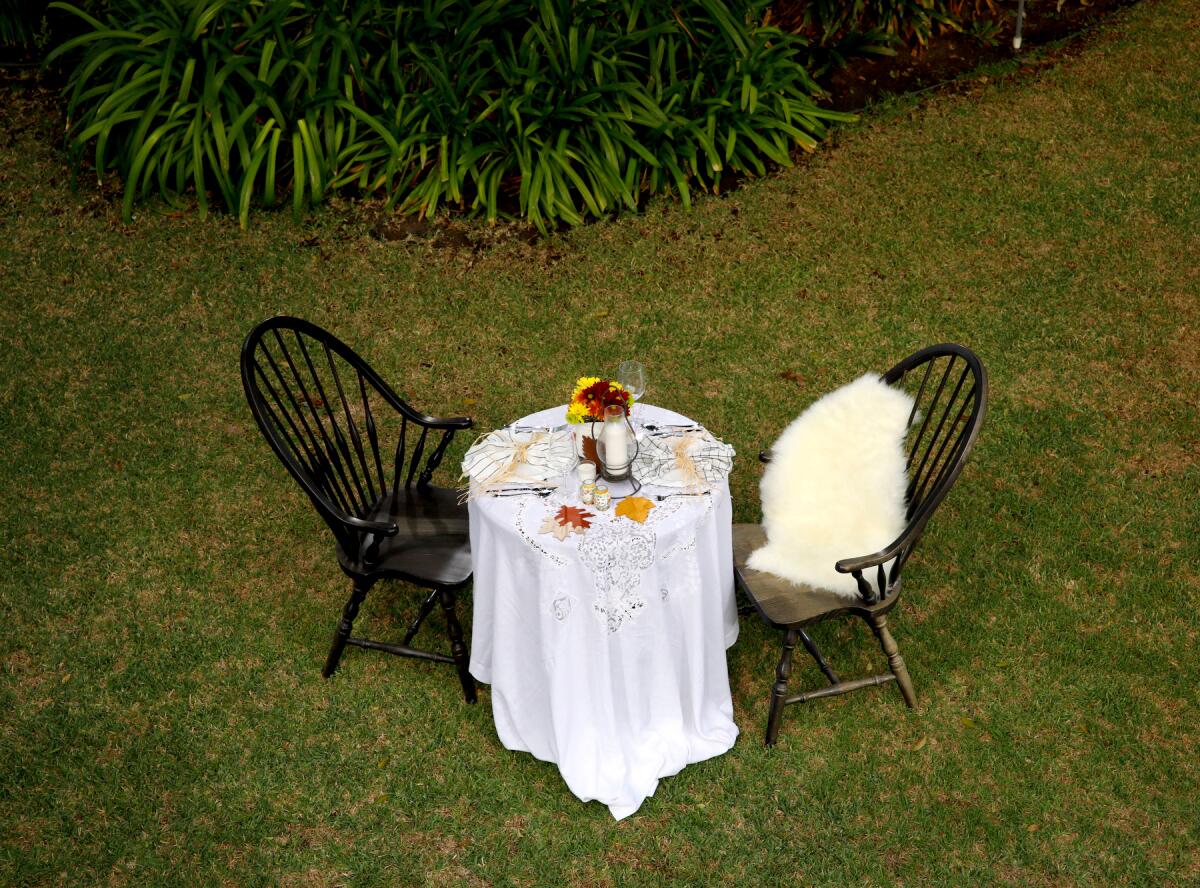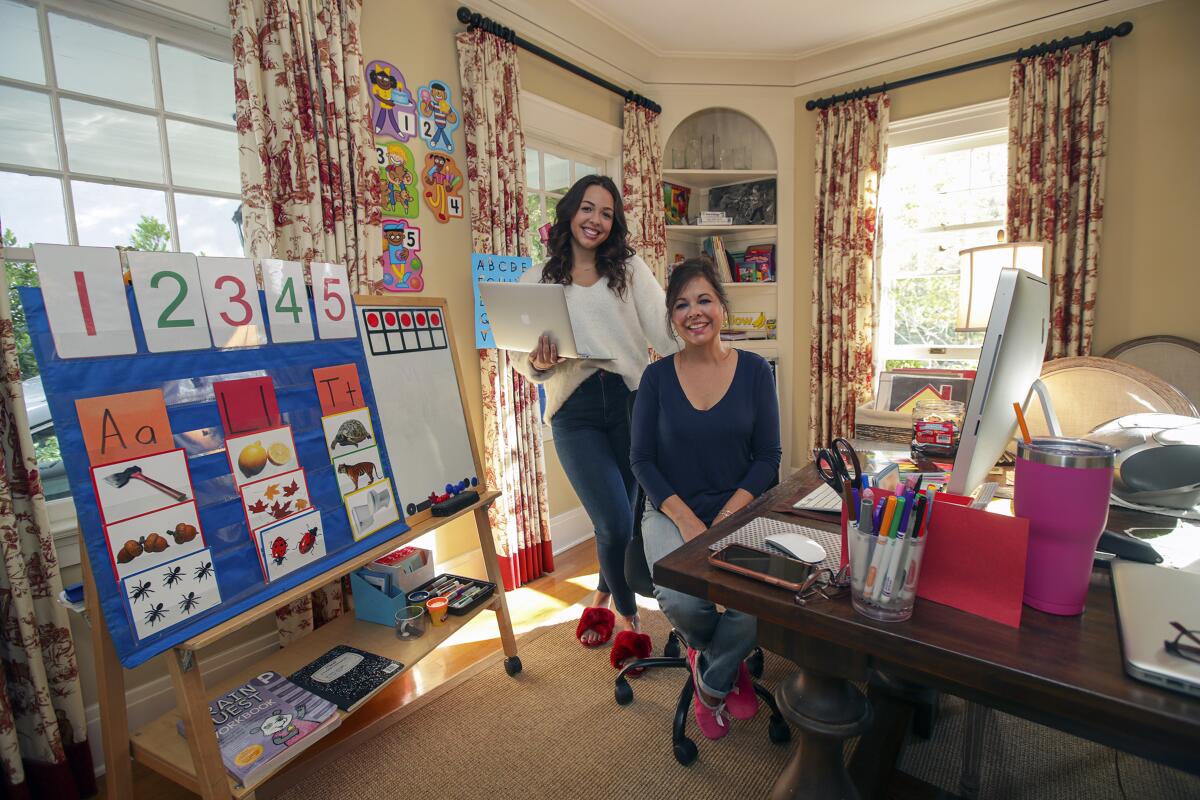Essential California: A harm-reduction approach to Thanksgiving

- Share via
Good morning, and welcome to the Essential California newsletter. It’s Wednesday, Nov. 25, and I’m writing from Los Angeles.
Sign up for Essential California
The most important California stories and recommendations in your inbox every morning.
You may occasionally receive promotional content from the Los Angeles Times.
The situation in California continues to grow increasingly dire as we careen toward the holidays, with coronavirus cases still soaring across the state. Statewide, the daily average of new cases, calculated over a seven-day period, more than doubled in the past two weeks. Most of California’s counties also reported the same doubling or worse.
The guidance for Thursday, as exhorted with increasing urgency by the Centers for Disease Control and Prevention, state and local authorities, is clear: The safest way to celebrate Thanksgiving this year is at home with members of your household.
[See also: “How should you celebrate Thanksgiving in California during the COVID-19 pandemic?” in the Los Angeles Times]
The state guidelines that cover about 95% of California’s population bar indoor gatherings and limit private outdoor gatherings to no more than three households. Officials in Los Angeles have gone further, strongly urging Angelenos not to have Thanksgiving with anyone outside their household, even if the meal is held outdoors.
But here we enter the valley of conflicting truths: People should not gather. Some people will still choose to gather. “Just Say No” messaging has a long and mostly failed history in the U.S., and shaming individuals for noncompliance rarely has the intended effect.
This summer, Dr. Eric Kutscher, an internal medicine resident physician at New York University, and Dr. Richard E. Greene, an associate professor at NYU Grossman School of Medicine, wrote about something that has become an increasing part of the conversation as the pandemic stretches on: how to take a harm-reduction approach to “safer socializing” during COVID-19.
Harm reduction, as Kutscher explains it, “is a theory that abolishes the all-or-nothing approach to risk and disease, by first acknowledging that abstinence-only is not possible for everyone.” It emerged as a public health strategy during the HIV/AIDs crisis and is commonly associated with programs like clean needle exchanges and safer sex education.
Last week, I spoke with Kutscher and Greene about what taking a harm-reduction approach to Thanksgiving might look like.
At this point, everyone knows the rules — and most people have broken them, at least a little bit. That’s normal, Greene explained. Perfect adherence to the guidelines may not be feasible for everyone — particularly those who live alone or have experienced other losses and hardship during the pandemic.
Harm reduction works by meeting people where they are and helping them evaluate and minimize the risk of doing something they’ve been told over and over again not to do — but are going to do anyway.
It can be particularly hard to accurately gauge risk when we’re dealing with the people closest to us. But asymptomatic transmission drives the majority of coronavirus cases, and the odds of infection in a given community remain the same whether you’re surrounded by strangers or family.
“It’s part of why the virus is spreading as quickly as it is,” Greene said. “Because we want to trust so badly that the people that look well and we care about don’t have this virus.”
Taking a harm-reduction approach also makes space for assessing what we actually value. It’s second nature to couple food with socializing. But is eating at the same time what matters most to you about the holiday? Or are there other traditions you could partake in — before or after eating with your own household — that would satisfy your needs?
“It’s OK to say I want to socialize with you and be around you without food or drink so I can keep my mask on,” Greene said.
To reiterate, the safest way to celebrate is at home, with just your household. But if you are considering spending Thanksgiving with anyone outside your household and haven’t already discussed the logistics in detail, now is the time.
“We owe ourselves and the people we love that degree of transparency to have these conversations, particularly in advance,” Kutscher explained.
Below are a few questions to use as a jumping-off point for that conversation, and some corresponding approaches for minimizing risk:
• Do we have to see each other in person? Or given the current rates of transmission, can Zoom suffice?
• Who are we seeing? Can that number be smaller? What risks do participants have based on age or underlying health conditions, and what is the plan for keeping the most vulnerable guests protected?
• Is there an alternative to eating together? Eliminating food and drinks will allow people to keep their masks on.
• If we choose to eat together, where will we be sitting and for how long? As Kutscher put it, there is “little excuse” for indoor dining at this moment in the pandemic, with case numbers where they are. If you’re going to eat outside, make sure members of different households are spaced at least six feet apart and wearing masks when not eating. Shorter gatherings (under two hours) are safer. Kutscher also suggested potentially eating at different times to help decrease the risk of transmission.
Although outdoor events are relatively less risky than indoor events, they can still result in superspreading events, especially if people do not wear masks and do not stay six feet away from each other, as my colleague Ron Lin has reported.
• How will we be handling the food? Use hand sanitizer frequently and don’t share food or utensils. Greene also suggested having a designated person portion the food while wearing a mask and gloves before it gets to the table.
We all know this, but perhaps it’s worthwhile to be reminded: The normal rules of social etiquette do not apply during a pandemic. If a gathering you were comfortable with even a week ago no longer feels safe, it’s not too late to get out of it.
“Trying to figure out how to get the least risk with the most emotional benefit is going to be an individual answer,” Kutscher explained. “But from a public health perspective, right now we’re looking at a very dangerous place with COVID cases in the country.”
And the risks to contend with extend far beyond your proverbial table, in terms of viral transmission and the very real possibility that our hospital system may become overloaded if the surge continues.
And now, here’s what’s happening across California:
L.A.’s outdoor dining ban survives challenges: With cases continuing to soar across the state, a divided Los Angeles County Board of Supervisors rejected calls Tuesday to walk back restrictions on outdoor dining meant to slow the coronavirus’ rapid spread. The chorus of objectors included the Los Angeles City Council, which voted 11 to 3 Tuesday to seek a repeal of the outdoor dining restrictions — saying they would trigger a new round of restaurant closures. Los Angeles Times
Meanwhile, San Francisco plans to keep restaurants open for outdoor dining when the city moves into the most restricted coronavirus tier, possibly later this week, a city official said Tuesday. Los Angeles Times
Note: Some of the sites we link to may limit the number of stories you can access without subscribing.
L.A. STORIES
Pasadena will allow outdoor dining to continue despite the L.A. County health order. Pasadena is one of two cities in Los Angeles County that has its own health department, independent of the county’s. Long Beach also has its own health department, but that city has opted to follow the county order. Los Angeles Times
This mother-and-daughter pair used to teach kindergarten in neighboring classrooms at a Highland Park school. Now they’re teaching remotely out of the same Pasadena house. Los Angeles Times

Travelers into L.A. must sign a form acknowledging the state’s 14-day quarantine advisory. The new form will be required beginning Wednesday. Los Angeles Times
Here’s the complete list of the 2021 Grammy nominees. Beyoncé tops the list, with nine nominations. Los Angeles Times
Support our journalism
IMMIGRATION AND THE BORDER
As coronavirus cases surge again, ICE leaders push to detain more immigrants. At the same time, advocates are urging California leaders to stop transfers from state prisons and jails to ICE custody and exercise public health oversight. Los Angeles Times
POLITICS AND GOVERNMENT
A showdown between two of the state’s most ambitious politicians and an unpaid $35-million tab: A behind-the-scenes look at the controversial no-bid contract awarded to public affairs firm SKDKnickerbocker to run a statewide voter education campaign, and why California still hasn’t paid the bill. Cal Matters
CRIME AND COURTS
Scams led Scott Peterson and several on death row to receive COVID-19 unemployment benefits, prosecutors say. Some claims may have been submitted by incarcerated individuals directly or by family and friends to whom they gave their personal information. Others may be unwitting victims. Los Angeles Times
HEALTH AND THE ENVIRONMENT
The fossil fuel industry wants you to believe it’s good for people of color. The climate crisis disproportionately harms Black people, Latinos and Native Americans. But oil and gas supporters are trying to claim the moral high ground. Los Angeles Times
CALIFORNIA CULTURE
Like a “Black Etsy”: For the Culture, an Oakland holiday market featuring Black women entrepreneurs, has moved online. San Francisco Chronicle
California’s wild turkeys are likely to trot north as the climate warms. Per the story, the five species of turkeys that exist in California today were introduced into the state by ranchers in 1877 as game birds. Cap Radio
A poem for the holiday ahead: “Thanks” by W.S. Merwin. Poetry Foundation
And a quick reminder that this newsletter will be off for the rest of the week and back in your inbox on Monday.
Free online games
Get our free daily crossword puzzle, sudoku, word search and arcade games in our new game center at latimes.com/games.
CALIFORNIA ALMANAC
Los Angeles: sunny, 66. San Diego: sunny, 66. San Francisco: sunny, 61. San Jose: partly sunny, 63. Fresno: sunny, 63. Sacramento: partly sunny, 63. More weather is here.
AND FINALLY
Today’s California memory comes from Peter Shaw:
Back in 1969 when it was possible to tent camp in Yosemite Valley, my future wife and I parked our rental car at a site and slept in sleeping bags under the stars, surrounded by motorized campers. At 3 a.m., the garbage cans near our site rattled. It was a bear family looking for dinner! We moved quickly to the car, where we spent the rest of the night!
If you have a memory or story about the Golden State, share it with us. (Please keep your story to 100 words.)
Please let us know what we can do to make this newsletter more useful to you. Send comments, complaints, ideas and unrelated book recommendations to Julia Wick. Follow her on Twitter @Sherlyholmes.
Sign up for Essential California
The most important California stories and recommendations in your inbox every morning.
You may occasionally receive promotional content from the Los Angeles Times.







